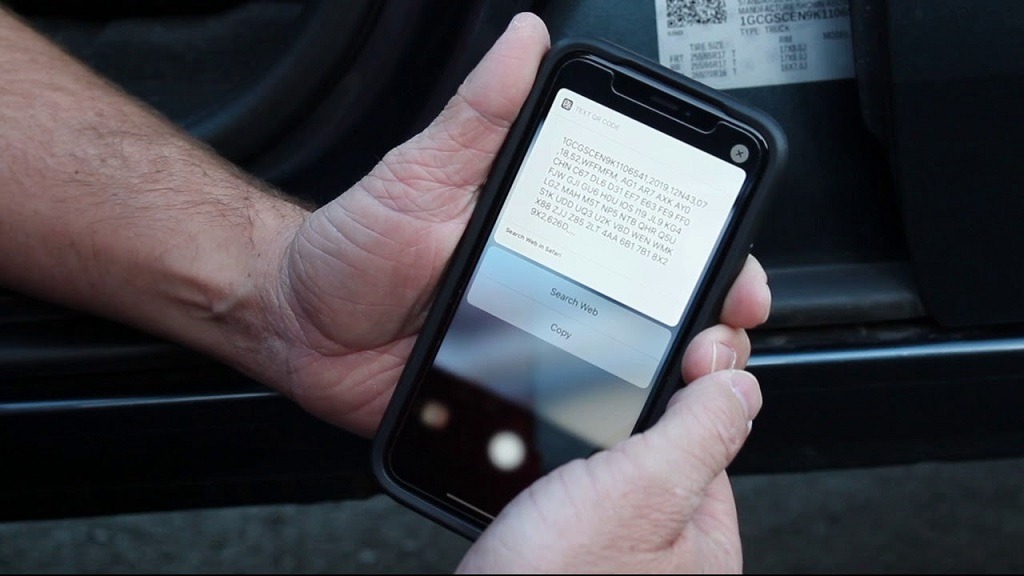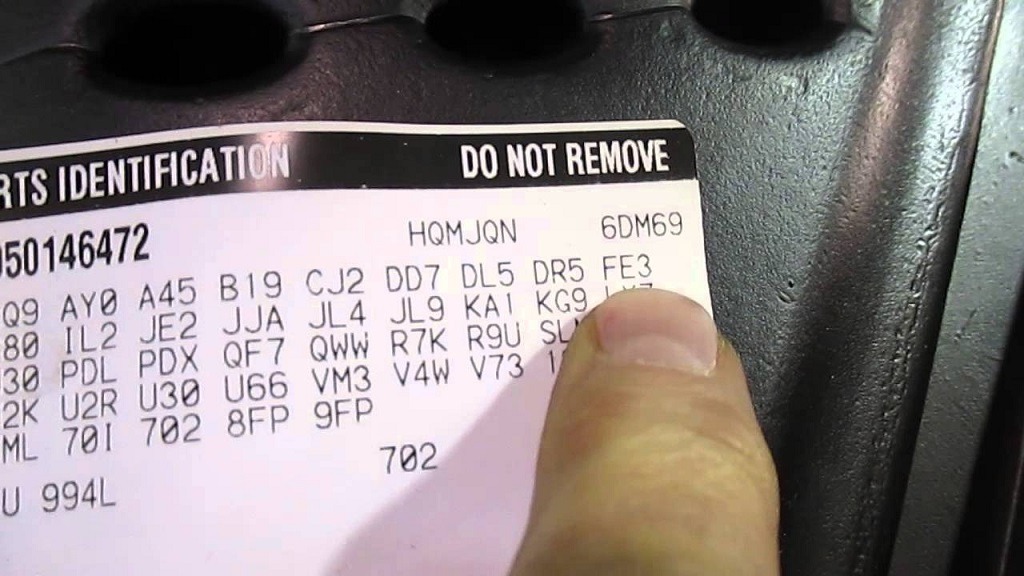Understanding your vehicle’s specifications can unlock a wealth of information about its features, manufacturing details, and unique configurations. For General Motors (GM) vehicle owners, GM RPO codes provide a detailed snapshot of a car’s build. These codes, also known as Regular Production Option codes, reveal specifics like engine type, transmission, and optional equipment. Fortunately, you can access this data using your vehicle’s VIN (Vehicle Identification Number). This article explains how to find GM RPO codes by VIN number, offering a step-by-step guide and a free VIN decoder tool from Trade Car Hub.
What Are GM RPO Codes?
GM RPO codes are three-character alphanumeric codes used by General Motors to identify specific features and options installed on a vehicle during production. Each code corresponds to a particular component, such as a specific engine, suspension system, or interior trim. These codes help owners, mechanics, and enthusiasts understand the exact configuration of a GM vehicle, which is especially useful for repairs, upgrades, or verifying authenticity.
To access these codes, you often need the vehicle’s VIN, a unique 17-digit identifier assigned to every car. By decoding the VIN, you can uncover the RPO codes and gain insight into your vehicle’s original build. For a detailed guide on this process, check out Trade Car Hub’s comprehensive guide on finding GM RPO codes by VIN number.
Why Are GM RPO Codes Important?
Knowing your vehicle’s RPO codes can be invaluable for several reasons. First, they confirm the factory-installed options, which is critical when buying a used GM vehicle. For example, you can verify if a car has a high-performance engine or specific safety features. Additionally, RPO codes assist mechanics in sourcing the correct parts for repairs, ensuring compatibility. They also appeal to car enthusiasts who want to confirm a vehicle’s authenticity, especially for rare or limited-edition models.
Moreover, RPO codes can affect a vehicle’s resale value. A car with premium features, like a performance package or advanced technology, may command a higher price. Therefore, understanding these codes empowers owners to make informed decisions about maintenance, modifications, or sales.
How to Find GM RPO Codes Using a VIN
Finding GM RPO codes by VIN number is straightforward if you follow these steps. Below is a detailed process to help you access this information quickly and accurately.
Step 1: Locate Your Vehicle’s VIN
The VIN is a 17-character code unique to your vehicle. You can find it in several places, including:
- The driver’s side dashboard, visible through the windshield.
- The driver’s side door jamb, on a sticker or label.
- Your vehicle’s title, registration, or insurance documents.
Write down the VIN carefully, as even a single incorrect digit can lead to inaccurate results.
Step 2: Check the Service Parts Identification Label
Many GM vehicles have a Service Parts Identification (SPID) label that lists the RPO codes directly. This label is typically found in the glove compartment, trunk, or spare tire well. For example, on a Chevrolet Silverado, you might find it on the inside of the glove box door. The label contains a list of three-character codes, each representing a specific feature of the vehicle.
However, not all vehicles have this label, or it may be damaged or missing. In such cases, you’ll need to decode the VIN to access the RPO codes.
Step 3: Use a Free VIN Decoder Tool
A VIN decoder tool translates the VIN into detailed vehicle information, including RPO codes. Several online platforms offer free VIN decoding services. For instance, Trade Car Hub provides a user-friendly VIN decoder that retrieves RPO codes for GM vehicles. Simply enter your VIN into the tool, and it will generate a report detailing the vehicle’s build specifications, including the RPO codes.
Alternatively, you can contact a GM dealership or service center with your VIN. Many dealerships can provide a build sheet—a document listing all RPO codes—based on the VIN. However, this may require a small fee or an in-person visit.
Step 4: Interpret the RPO Codes
Once you have the RPO codes, you need to understand what they mean. Each code corresponds to a specific feature. For example:
- Z71: Off-road package (common on Chevrolet trucks).
- L83: 5.3L V8 engine.
- G80: Limited-slip differential.
To decode these codes, you can use online resources like GM’s official website or enthusiast forums. Some websites, such as Edmunds, offer guides to common RPO codes, making it easier to interpret the list.
Step 5: Verify the Information
After obtaining the RPO codes, cross-check them with your vehicle’s features. For instance, if the code indicates a premium audio system, confirm that the car has the corresponding equipment. This step ensures the accuracy of the information and helps identify any discrepancies, especially when purchasing a used vehicle.
Free VIN Decoder Tools for GM RPO Codes
Using a free VIN decoder is one of the easiest ways to find GM RPO codes by VIN number. These tools are widely available online and require only the VIN to generate a detailed report. Trade Car Hub’s VIN decoder is a reliable option, offering a simple interface and accurate results. Other reputable platforms include:
- Carfax: Known for vehicle history reports, Carfax also provides VIN decoding services that may include RPO codes.
- GM’s official service portals: Some GM websites allow owners to access build sheets by entering their VIN.
When using these tools, ensure you’re on a secure website to protect your personal information. Avoid sharing your VIN on unverified platforms to prevent potential misuse.
Tips for Using GM RPO Codes Effectively
Once you have the RPO codes, here are some practical ways to use them:
- Verify vehicle authenticity: Confirm that a used car matches its advertised features, such as a performance package or specific trim level.
- Source correct parts: Provide the codes to mechanics or parts suppliers to ensure compatibility during repairs or upgrades.
- Enhance resale value: Highlight premium RPO codes when selling your vehicle to attract buyers looking for specific features.
- Customize modifications: Use the codes to plan upgrades that align with the vehicle’s original configuration.
By leveraging RPO codes, you can make informed decisions about your GM vehicle, whether you’re maintaining it, modifying it, or preparing it for sale.
Read More Also: When are the Best Times to Sell Your Property? Timing Your Sale for Success
Common Challenges and Solutions
Finding GM RPO codes by VIN number is usually straightforward, but challenges can arise. For example, older vehicles may lack a SPID label, or the VIN decoder may not provide a complete list of codes. In such cases, contact a GM dealership or use multiple VIN decoder tools to cross-reference the information.
Another issue is interpreting complex codes. Some RPO codes are model-specific, and their meanings may not be immediately clear. Online forums, such as those on GM-Trucks.com, can be valuable resources for decoding obscure codes.
Read More Also: Five Apps That Can Help You Stay Fit
Conclusion
Accessing GM RPO codes by VIN number is a powerful way to unlock detailed information about your vehicle’s build. By following the steps outlined—locating the VIN, checking the SPID label, using a free VIN decoder, and interpreting the codes—you can gain a deeper understanding of your GM vehicle’s features. Tools like Trade Car Hub’s VIN decoder make the process simple and accessible. Whether you’re a car enthusiast, a mechanic, or a prospective buyer, RPO codes provide critical insights that enhance your ownership experience.
Frequently Asked Questions
What are GM RPO codes?
GM RPO codes are three-character codes that identify specific features and options installed on a General Motors vehicle during production.
Can I find GM RPO codes without a VIN?
Yes, RPO codes are often listed on the Service Parts Identification label, typically found in the glove box, trunk, or spare tire well. However, a VIN is needed for online decoding tools.
Are VIN decoder tools free?
Many VIN decoder tools, like the one offered by Trade Car Hub, are free. Some platforms may charge for detailed reports, but basic RPO code information is often available at no cost.
How do I know if my RPO codes are accurate?
Cross-check the codes with your vehicle’s features or consult a GM dealership to verify the build sheet.
Why do some RPO codes vary by model?
RPO codes are specific to the vehicle’s make, model, and year, as certain features are exclusive to particular configurations or trim levels.







